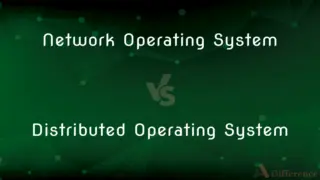Green Revolution vs. White Revolution — What's the Difference?
Edited by Tayyaba Rehman — By Fiza Rafique — Published on January 18, 2024
Green Revolution increased agricultural output through technology; White Revolution massively enhanced dairy production and rural economy.

Difference Between Green Revolution and White Revolution
Table of Contents
ADVERTISEMENT
Key Differences
The Green Revolution refers to a series of research, development, and technology transfer initiatives, occurring between the 1940s and the late 1960s, that increased agricultural production worldwide, particularly in the developing world. It involved the introduction of high-yield crops, chemical fertilizers, and irrigation methods.
The White Revolution, also known as "Operation Flood," was primarily an Indian development program that started in 1970. It transformed India into one of the largest milk producers in the world, improving rural livelihoods and the dairy industry through modernization and cooperative strategies.
Green Revolution methods led to significant increases in food grain production, especially wheat and rice, which contributed to reducing famine risks and feeding a growing global population. However, it also led to ecological side effects like soil degradation and increased use of pesticides and fertilizers.
Conversely, the White Revolution focused on milk production and involved organizing rural milk producers into cooperatives, which led to increased milk production and improved infrastructure for rural dairy farmers without the same level of environmental impact.
Both revolutions were instrumental in transforming their respective sectors—agriculture for the Green Revolution and dairy for the White Revolution—both aiming to improve yields and the livelihoods of farmers.
ADVERTISEMENT
Comparison Chart
Focus Area
Crop production and technology
Dairy production and rural economy
Geographic Origin
Global, with a focus on developing nations
Started in India, known as Operation Flood
Key Elements
High-yield crops, fertilizers, irrigation
Milk cooperatives, modern dairy practices
Period
1940s to late 1960s
Launched in 1970
Environmental Impact
Soil degradation, pesticide use
Less direct environmental impact
Compare with Definitions
Green Revolution
A transformation in agriculture aiming to prevent famine.
The Green Revolution's techniques spread rapidly across continents.
White Revolution
A drive to modernize dairy farming and milk processing in India.
Technological improvements during the White Revolution enhanced milk quality.
Green Revolution
A period of agricultural advancement through modern technology and methods.
The Green Revolution led to a substantial increase in crop yields.
White Revolution
A rural development campaign leading to a surge in milk yield.
The White Revolution also led to significant increases in rural employment.
Green Revolution
The adoption of high-yield crop varieties to enhance food security.
New varieties of wheat from the Green Revolution boosted production.
White Revolution
The transformation of India's milk industry into a cooperative model.
Milk cooperatives became the backbone of the White Revolution.
Green Revolution
A global movement to increase agricultural productivity.
Irrigation systems installed during the Green Revolution improved farming efficiency.
White Revolution
An initiative that made India a leader in global milk production.
India's milk output soared due to the White Revolution.
Green Revolution
The introduction of chemical fertilizers and pesticides in farming.
The Green Revolution relied heavily on synthetic fertilizers to increase soil fertility.
White Revolution
India’s mass movement to increase milk production and rural development.
The White Revolution brought prosperity to Indian dairy farmers.
Common Curiosities
When did the White Revolution start?
The White Revolution began in India in 1970.
Who was a key figure in the Green Revolution?
Norman Borlaug, an agronomist known as the "father of the Green Revolution."
What was the main goal of the White Revolution?
To increase milk production and improve the rural economy.
What prompted the Green Revolution?
The need to prevent hunger by increasing food production.
How did the Green Revolution impact farmers?
It increased their crop yields but sometimes also increased their debt due to the cost of new technologies.
Did the Green Revolution reach Africa?
Its impact in Africa was limited compared to Asia and Latin America.
Did the Green Revolution affect all crops?
It primarily increased yields of staples like wheat and rice.
What was the economic impact of the White Revolution?
It significantly boosted rural incomes and India’s economy.
Are Green Revolution practices sustainable?
Some practices led to environmental concerns and are being re-evaluated.
Did the White Revolution involve technology?
Yes, it involved new milk production and processing technologies.
What role did fertilizers play in the Green Revolution?
They were key in increasing crop yields but had environmental side effects.
Was the White Revolution only about milk production?
While focused on milk, it also aimed at overall rural development.
How did the White Revolution help small farmers?
It helped them form cooperatives, giving them better market access and prices.
What were the environmental impacts of the White Revolution?
It was generally less environmentally intrusive than the Green Revolution.
Are the effects of the Green Revolution still felt today?
Yes, it has left a lasting impact on global agriculture and food security.
Share Your Discovery

Previous Comparison
Network Operating System vs. Distributed Operating SystemAuthor Spotlight
Written by
Fiza RafiqueFiza Rafique is a skilled content writer at AskDifference.com, where she meticulously refines and enhances written pieces. Drawing from her vast editorial expertise, Fiza ensures clarity, accuracy, and precision in every article. Passionate about language, she continually seeks to elevate the quality of content for readers worldwide.
Edited by
Tayyaba RehmanTayyaba Rehman is a distinguished writer, currently serving as a primary contributor to askdifference.com. As a researcher in semantics and etymology, Tayyaba's passion for the complexity of languages and their distinctions has found a perfect home on the platform. Tayyaba delves into the intricacies of language, distinguishing between commonly confused words and phrases, thereby providing clarity for readers worldwide.














































